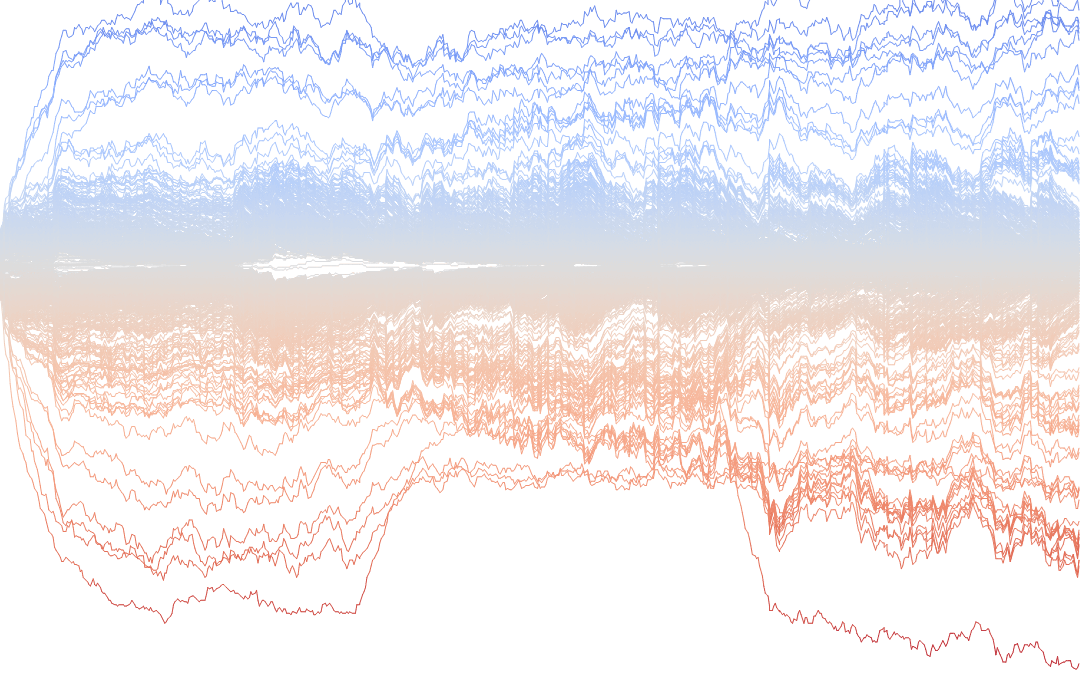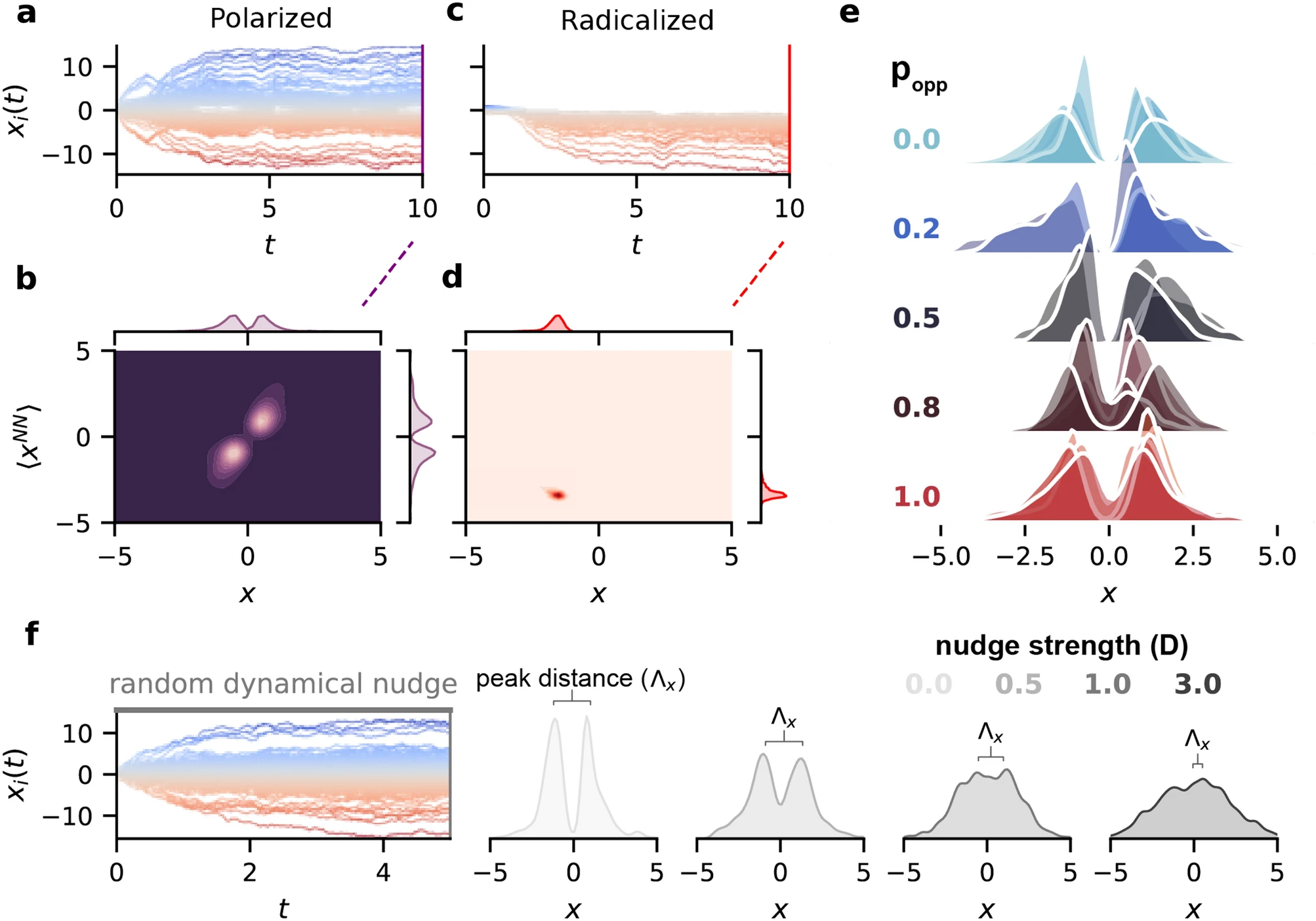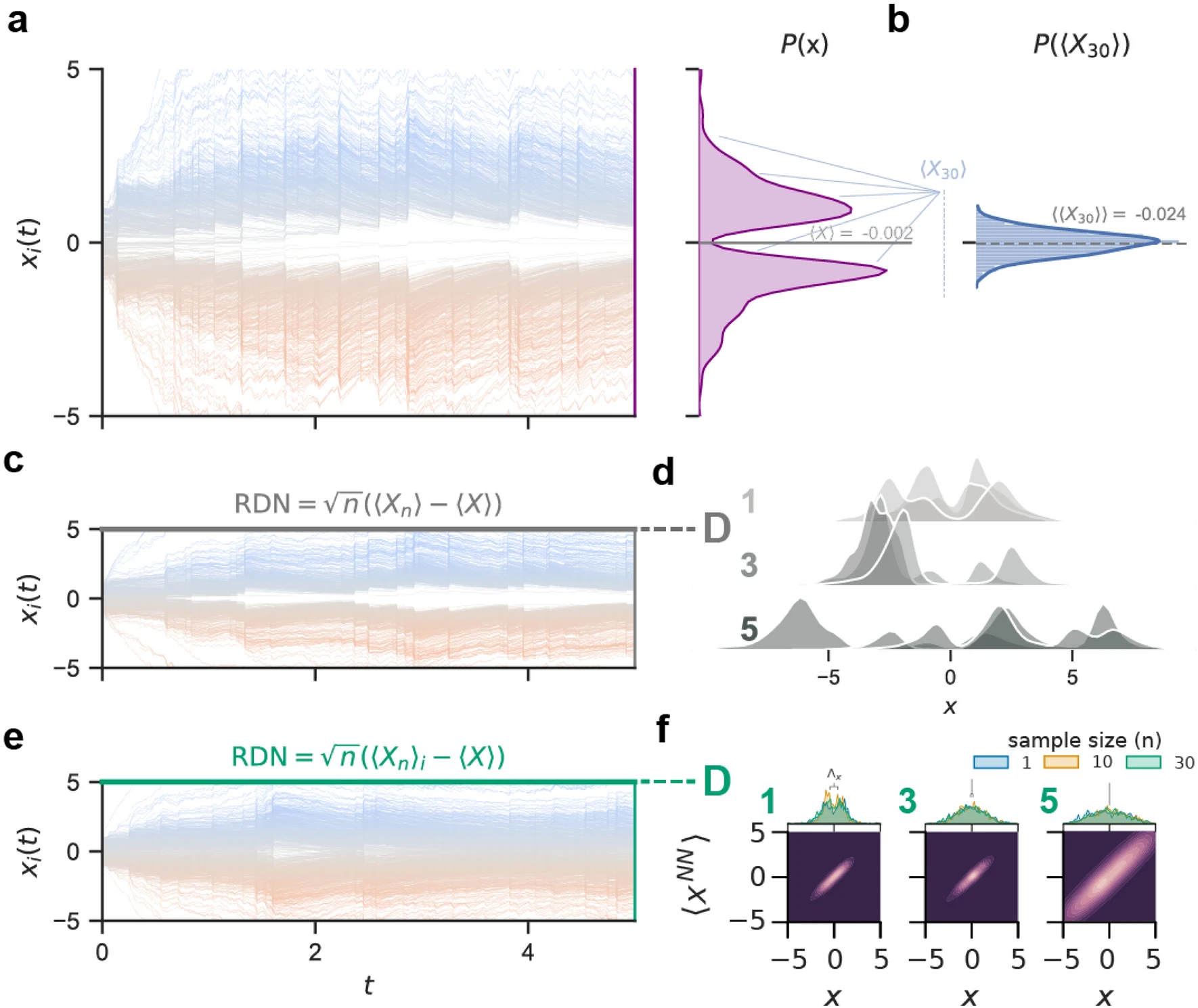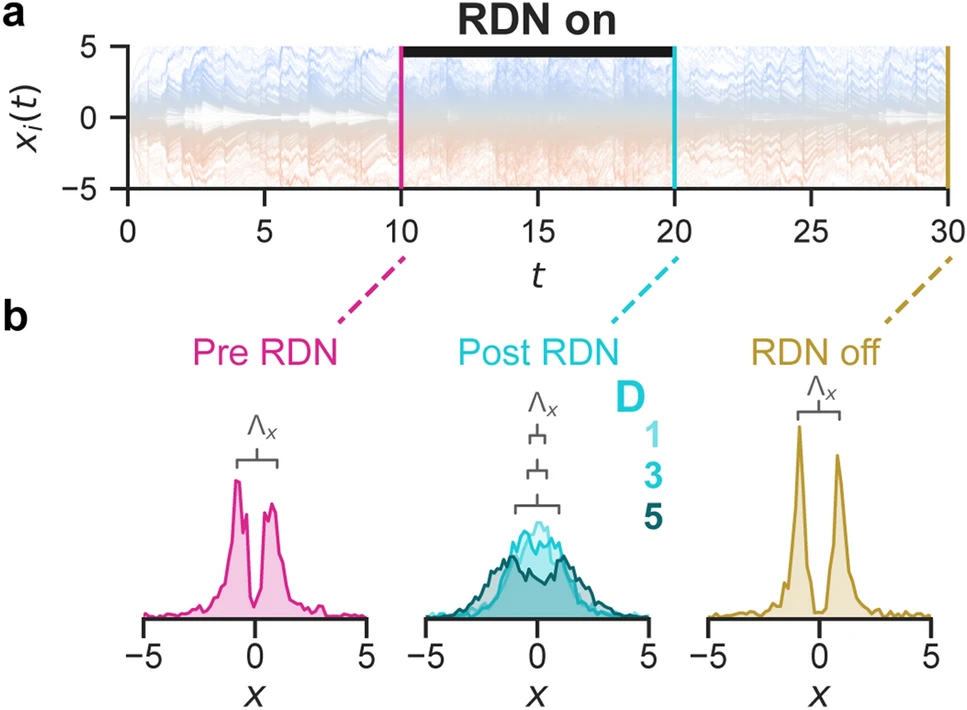Social dynamics

Our paper, published in “Scientific Reports,” addresses the phenomenon of echo chambers in social networks, where users often engage with like-minded peers, leading to polarization. We propose a method, the Random Dynamical Nudge (RDN), to bridge polarized communities and achieve a neutral consensus. The RDN exposes users to a random selection of opinions, avoiding the need for intensive surveillance of individual opinions. Our computational models show that RDN can effectively depolarize existing echo chambers and prevent their formation. This approach could be a practical tool for social media networks to manage online community segregation on complex social issues.
Our approach uses the Central Limit Theorem to address echo chambers in social networks. The Central Limit Theorem states that the sum of a large number of independent random variables is approximately normally distributed. We use this property to model the opinions of a large number of individuals as a normal distribution. The mean of the distribution represents the average opinion of the population, and the standard deviation represents the diversity of opinions. We then use the Random Dynamical Nudge (RDN) to shift the mean of the distribution towards the center, thereby reducing polarization. The RDN is a random selection of opinions from the population, which is then presented to the individual. The RDN is a simple and effective method for depolarizing echo chambers.

Figure 1 from our paper illustrates the effect of the Random Dynamical Nudge (RDN) on the opinions within a social network. It shows how opinions evolve over time without (polarized and radicalized states) and with the RDN (depolarization). Without RDN, opinions tend to form clusters (echo chambers), while with RDN, opinions are more evenly distributed, leading to less polarization. The figure also displays the probability of opposing opinions interacting, which does not depolarize the network and can make things worse. This confirms experimental findings.

Figure 2 of our study in “Scientific Reports” demonstrates how the Random Dynamical Nudge (RDN), grounded in the Central Limit Theorem, normalizes opinions in a polarized social network. It shows that by exposing each individual in the network to a random sample of opinions, the overall distribution of beliefs shifts towards a neutral center. This prevents the formation of echo chambers and suggests that for RDN to be effective, each individual must receive personalized exposure to a range of views. The figure reveals that larger nudges lead to more neutral but also more extreme opinions.

Figure 3 in our paper visually demonstrates the effectiveness of the Random Dynamical Nudge (RDN) in depolarizing echo chambers within social networks. It shows the opinion distribution of 1,000 agents over time, first without RDN, which results in a polarized state. Then, when RDN is applied (indicated by a black bar), opinions shift towards the center, indicating depolarization. Finally, when RDN is removed, the distribution of opinions reverts to a polarized state, implying that the RDN should be used continously (or frequently, for follow-up work).